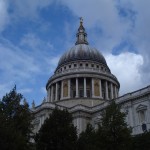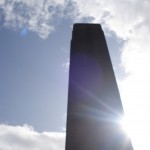September 15th, 2009 · No Comments
-
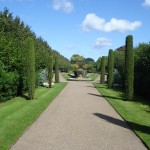
-
Regents Park
-

-
Christ’s Church
-
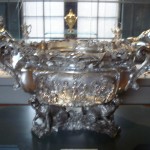
-
The Silver Exhibit in the V&A
-

-
Having a Good Time at the Fitzroy
Like many of my classmates I decided it would be worthwhile to summarize all of my discoveries this month in London. During this post I will focus on six main themes found within London: Parks, Churches, Pubs, Other Religious Institutions, Theatre and Museums.
Parks
Each park that I visited had its own distinct characteristics that separated it from any other. Green Park was the first I visited and after perusing a few others, I realized there was nothing that exciting about it. Located right across from Buckingham Palace, Green Park certainly provides a good place to go and take a break from the busy atmosphere of the area. Besides this however there is not much going on and I would recommend that potential park goers walk the extra distance over to St. James Park.
In addition to the large number of waterfowl heckling people for food which offers consistent entertainment St. James offers some picturesque flower beds throughout and various monuments along the way. It has the relaxing atmosphere of Green Park with a bit more excitement sprinkled in.
Regents Park offers a completely different feel from Green or St. James. Located in a separate area of London, Regents Park has a history of being used by a higher end crowd. I could tell this immediately from the feel of the park. The decorative shrubbery and elegant architecture throughout gave me a feeling that Regents is not as well used as other parks.
Since I was one of the members of the Parks group that gave a walking tour of Hyde Park and Kensington Gardens I could go into a lot more detail about these two green spaces but I will choose not to in an effort to be concise. In summary Hyde Park is the largest green space in London and is often used for larger events such as concerts, festivals etc. It also contains a large number of monuments throughout including the 7/7 memorial and the Diana Memorial Fountain. Kensington Gardens is home to a variety of key monuments but is not as well trodden as Hyde. Overall it makes for a quieter atmosphere, more conducive fo reading or “snogging”.
Regents Park were my two favorite green spaces in London. Regents, is both beautiful, and extremely large and I continually felt the need to go back and explore. Kensington Gardens appealed to me in that it was quainter than Hyde Park but contained a like amount of history and monuments throughout. Although I would be content spending a length of time in any London green space Regents and Kensington would be my top choices.
Theatre
Overall I enjoyed going to the theatre on so many occasions. What better place to do so than in London after all? Here I will discuss my favorite performances and theatre venues.
All in all I enjoyed all but two of the performances we saw. The two Shakespeare productions at The Globe Theatre were fantastic. Although I did not particularly enjoy reading Troilus and Cressida it made a huge difference to be there so close to the actors. The fantastic drum chorus at the end really sealed the deal. As You Like It was probably my favorite show I saw here in London. Although it is one of Shakespeare’s simpler plays the actors really made it jump off the page. Being down it the pit was fantastic because of all the ad-libbing and constant interaction with the crowd. I even felt traces of Touchstone’s saliva on my arm at one point.
The other Shakespeare performance I saw, All’s Well That Ends Well, was lackluster. Although the Olivier was my favorite performing venue (this is what an auditorium style theatre should be like…why can’t Dickinson have something like this?) the play itself was odd and ended on an abrupt and odd note.
The other play we saw at the National Theatre, The Pitmen Painters, was fantastic. Although I was dozing a bit because of the Benadryl I took right before the show, the actors kept my attention and I appreciated that the play was based off of a true story.
Easily the oddest play we saw was Arcadia. An extremely intelligent performance the play juxtaposed two different periods in time and created a singular storyline in which the plot was based. Overall it was an entertaining performance that made me think early and often.
Finally there was Blood Brothers. The lone musical I saw produced feelings of disbelief, anguish and held back laughter. The ridiculous 80’s sound track and creepy narrator just didn’t do it for me. I think it’s safe to say that I was not the only one from Humanities 309 who was a bit surprised to see just about everyone in the audience give it a standing ovation.
I had a very positive experience with the theatre here. I would go back to the globe again and again. I loved being that close to the action. I would also enjoy seeing another show in the Olivier. There really is so much to choose from here. It’s simply a matter of figuring out your tastes and saving your money so you can see a lot of performances.
Churches
From Westminster Abbey to St. Paul’s Cathedral we saw most of the major churches/cathedrals during our month in London. St. Paul’s was easily my favorite. From the fantastic crypt to the hundreds of stairs up to the tower it had so much to offer in the way of history and mystique. Westminster Abbey fascinated me primarily because of all the literary figures that had been buried inside as well as the room that was dedicated to “The Order of the Bath”. Other churches that I really enjoyed taking a look at were: “St. Martin in the Fields” which sits just outside Trafalgar Square and Nicholas Hawkesmoore’s “Christ’s Church” which is located in very close proximity to Brick Lane.
Other Religious Institutions
Overall the Sikh Gurdwara was my favorite place that we visited. I appreciated the simplicity of the religious doctrine as well as the conviction and honesty with which our tour guide, Mr. Singh spoke. The morning was capped off with a fantastic sit down meal together in which everyone was served the same food and drink.
I had different feelings about the Hindu Mandir. It was clear to me from the very beginning that the Hindu religion is not nearly as modest as Sikhism nor are they trying to be. From the extremely decorative prayer room, to the museum located right in the center of the Mandir I never felt particularly comfortable inside.
The only religious institution I wish we had gotten a chance to visit is a Mosque. I had been to one many years ago but I did not remember a whole lot from my experience. I wonder how much more lively the East End, and all parts of London would be if Ramadan were not taking place during our time here.
Museums
I could go on and on about museums so I will attempt to stay as concise as possible.
The British Museum was massive, convenient since it was so close to the Arran House but a little one dimensional at times. One of my favorite exhibits at the British Museum was a special exhibit on Living and Dying that drew information from all different time periods and cultures.
The National Gallery was fantastic. Although I have a hard time appreciating some visual art the gallery kept my attention for a number of hours. Seeing so many famous works of art was phenomenal.
The Tate Modern was my least favorite museum here. Although I am trying I have a hard time understanding modern art. After about 45 minutes in this museum it ended up being too much for me.
The Cabinet War Rooms/Churchill Museum were two of my favorites. The realization that I was standing in one of the most important places in World War II history was unbelievable. The War Rooms felt so authentic. I really felt as though I had been taken back in time to the 1940’s while inside.
The Victoria and Albert was easily my favorite museum in London. There was so much variety inside and so much to see. I could have easily spent a few days inside. Two of my favorite exhibits were the silver and jewelry exhibits. I’m not sure what this says about me as a person but I found it unbelievable that individuals could even own such treasures. I also enjoyed the laid back atmosphere of the V&A staff. At most of the other museums I visited I felt like I was doing them a disservice simply by being there. Although I understand that taking pictures of an object in a museum doesn’t do it justice I like to be able to have the option of doing so.
The Sir John Soane museum interested me but it wasn’t really my cup of tea in the end. It also had a stuffy atmosphere to it that I didn’t really appreciate.
One thing I can draw from my experience at museums here is that each and every one has something that distinguishes it. With so many museums I thought that it would be impossible to avoid some overlap but I never really felt that. Cheers to London and its museums.
Pubs
Finally we have pubs. What would London be without it’s public houses? In some cases pubs are the true museums of London, designating what an area was like in the past and what type of clientele it attracted. During my month here I had a chance to visit a few pubs and get a general sense of what some possible differences could be. It is clear to me that each pub brings something different and unique to the table. The Marlborough Arms was convenient being so close to the Arran House and was a great place to enjoy a pint over a meal with friends. The Court was conducive to socializing in a different way. The music was louder, the people louder and the drinks cheaper. Other places I visited offered other things that made them stand out as well. One thing that i’ve learned about pubs is that it’s hard for one to please everyone. Since everyone has different tastes and desires when it comes to pubs you are better off going to one with a small cohesive group.
To conclude this novel I would just like to say that I think we saw a lot of different faces of London this month. I realize there is much more to see here but between walking tours throughout the city, trips to major monuments and museums and individual exploration I have learned a ton about London, it’s history and where it is going. I look forward to more London explorations in the future but for now, ON TO NORWICH!
Tags: Churches and Cathedrals · Henry · Pubs · Theatre
September 14th, 2009 · 1 Comment
Today Sarah and Alli ventured into the Cabinet War Rooms and the Churchill Museum. From remarks from our classmates, we thought it would be a quick trip through, but it most certainly was not! The museum was packed full of video footage, interactive exhibits, artifacts, and sheer information. For us to fully read and thoroughly explore the place, it probably would have taken us about 3 hours. Since it was the most interactive and technology-based of all the museums we had gone to in London, we would like to further discuss the use of these ideas.
Both of us have worked with museums and exhibits this summer, so neither of us can help it but to look at exhibits with a more critical eye. The Churchill Museum, only just recently opened in February 2005, relies on its “cutting-edge technology and multimedia displays” to bring Churchill’s story to life. The displays include a 15 metre-long interactive lifeline that, by sliding your fingertips along a strip, you can access information from every year of Churchill’s life.We felt the most effective interactive display was a touch-screen poll that initally asked the guest’s opinion on a certain aspect of Churchill’s life, such as “Do you think Churchill was a good wartime leader?” You were then offered more information on your topic and then reasked the question to see if your opinion changed.
We then thought about the importance of technology in museums and what it has added to the visitor experience. Technology has improved museum exhibitions in many ways: visitors can access historical documents, watch video footage, play “educational games” to learn information, and the museum is able to house much more materials through databases than they could before. It also allows visitors to choose whether they would like to view more information or “do research” or they can decide to move on. In this way, the experience is much more “tailor-made” for the visitor, allowing them to explore their own interests.T
The use of technology comes at a price. First of all, many museums do not even have the funding to afford such displays set up, even though it would benefit them greatly. Many museums, whether they are being rennovated or newly opened, are almost expected to have some sort of technology involved. Also, as we all know too well, the use of technology often comes with glitches and is susceptible to malfunctioning. The 15 metre interactive timeline was a great idea, but we could not really figure out how to use it! For two 20 year-olds who grew up using technology, we can’t even imagine older folks trying to figure out some of these displays.
Overall the technology benefitted our experiences in the Churchill Museum. We noticed most of the visitors engaged with the interactive media and we learned a whole lot more than we expected to. However, museums need to carefully evaluate their reliance on technology-based exhibits. The ideal exhibit would be a balance of both the traditional artifact-based model with some elements of technology to enhance the objects and the concepts presented.
Tags: Alli · Sarah
September 14th, 2009 · 1 Comment
From what I heard from other group members, I wasn’t quite sure what to expect about the Victoria and Albert Museum. Being situated right next to the Natural History Museum, I wished I could skip the Victoria and Albert and go straight there. Nonetheless, once I entered the V&A, I knew I would not be disappointed. Sadly, I did not get to see every exhibit, but I saw enough to realize how amazing the V&A is. The one exhibit which I really liked was the medieval section. Despite the fact that the other half of it was closed due to renovations and preparation for an updated exhibit, there was no disappointment to be found with the half that was open.
The Cast Courts was perhaps one of the most amazing exhibits I have seen in a museum in London. Though not the originals, the casts in this exhibit are truly marvelous. Trajan’s Column stunned me once I entered the room. Its massive size and detailed inscription spoke volumes about the glory and power that was once the Roman Empire. I had the same feelings of glory and power when I saw the cast of Perseus with the severed head of Medusa. Though nowhere near in size to Trajan’s Column, the cast still gave off an aura of greatness. These feelings were not just with Roman casts. The altarpiece of the annunciation and passion of Christ was spectacular. Its intricate detail and beauty was beyond comparison; it was my favorite altarpiece out of all of them in the V&A. Almost rivaling Trajan’s Column was the Portico de la Gloria. Though in Spain, this cast was simply beautiful. Built to honor God, the structure is also a monument to what Man is capable of creating.
One thing I think some people had a problem with the V&A was that there was just a bunch of differing exhibits together in the same museum; you could go from Medieval Europe to Japan fairly quickly. The question bound to come up is “what makes this British?” I don’t have an answer to this but I can say that perhaps there is nothing truly British about the museum expect for the name. It is possible that the museum wants nothing more than to be a place to learn about other cultures. The British have a long history of colonialism and imperialism; this has inevitably led to the meeting of other cultures. Perhaps now instead of colonizing, the British have decided they want to learn about other cultures through a museum.
—
I think my favorite museum thus far was the Cabinet War Rooms. I love anything related to World War Two so the War Rooms was something right up my alley. The entire thing was highly informative and very interesting. Walking down the narrow corridors just gives you the feeling of being alive in the early 1940s. The small quarters made me realize how difficult it must have been to live and work in the War Rooms. Coupled with the fear of invasion and the reminders of a possible chemical attack (there were a number of gas masks around), to have been alive during this period and to have worked in the War Rooms is something truly remarkable. The British take great pride in standing up to the Nazi war machine and so the Cabinet War Rooms is a place where you can feel that sense of courage and pride in the face of a brutal enemy.
Tags: Andrew F
September 13th, 2009 · No Comments
In case my portmanteau skills are just too much to handle, this post is a combined reflection of my overall museum experience here in London. I am splitting it into two parts so Karl doesn’t fall asleep 1000 words into the post. Enjoy!
Cabinet War Rooms
I have never been one for history class, since the present and future have always been much more interesting to me than the past. I do appreciate how important it is to learn and understand the past because I believe that time is cyclical in nature (another topic for another time, probably a class on Nietzsche). My experience in the Cabinet War Rooms turned my opinions upside down. Never before have I been so enthralled by the events of yesteryear. The museum did a fantastic job of immersing me into what truly felt like World War II era Britain. Because the bunker was so impeccably preserved, it really felt like Prime Minister Churchill was actually working, chain smoking cigars a few rooms down from me while top-level officers made encrypted phone calls to top secret locations. The sense of urgency was palatable. Beginning in 1940, the Germans started working on Operation Sealion, a full-scale invasion of the UK. Looking into the rooms where crucial decisions were made gave me a real sense of anxiety. Will the invasion really happen? Will it be next week, or even later today? How can we prepare a country of millions against one of the most powerful forces in the world? All these questions were dealt with directly exactly where I was standing. It’s hard to fathom how much pressure was felt by Mr. Churchill at any given time throughout those six, unbearably tense years. Remarkable.
What made me happiest was the sense of humor Churchill and crew managed to maintain throughout the war. Take the map room, a very sparse and serious quarters where some of the most important decisions of this country’s history were made. Right smack in the middle of the Pacific Ocean away from all the action (and any landmass) was some bored officer’s caricatured sketch of Adolf Hitler. I wish I hadn’t forgotten my camera, because it was such a hysterical juxtaposition of absolute seriousness and absurd humor. In another important room was a huge clump of multicolored telephones that the officers endowed with the appellation “The Beauty Chorus.” Instances like these support my philosophy that there is humor to be found in every situation, but again, another topic for another time.

http://www.surbiton-probus.org.uk/images/Cabinet-War-Rooms.jpg

http://www.ahoys.com/blog/wp-content/uploads/2009/05/cabinet-war-rooms.jpg
Victoria and Albert Museum
The V&A is exactly the type of museum I can’t stand. Again, the past tends to bore me in the face of the present, and looking at minutia such as plates and vases from X number of years ago is about as exciting to me as, well, you get the idea. This museum was stuffed to the gills with the riff-raff of ancient civilizations. The layout didn’t help very much either. Each civilization has its own section, ranging from the vast, sprawling “17th Century Europe” section, to the disappointingly diminutive Korea exhibition, brought to you by Samsung.
After some mindless wandering, I decided that the best way to overcome my ennui was to immerse myself in a culture totally unfamiliar. I chose Japan on the basis that samurai are really cool, admittedly. After about an hour of exploration, I found myself to be pleasantly surprised. They had an interesting display of Noh garb. Noh is a form of Japanese drama popularized during the 14th Century. It is most interesting because of its parallels with Zen Buddhism. It complies with Zen’s principles of “restraint, understatement, economy of movement, and frugality of expression,” as noted by the exhibit. The minimalistic plays involved very little movement on the part of the actors, few if any props, and absolute austerity. In stark contrast to the scant nature of the acting, performers wore Noh masks. Each mask represents a different emotion. The following masks were on display (All images from www.nohmask.com, except for Okina, found at http://www.artsci.wustl.edu):
Hannya, a woman turned demon representing jealousy.
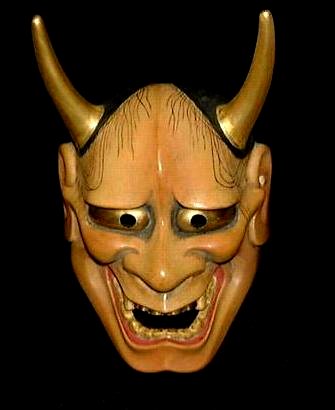
Hannya
Waka-Onna, a young woman symbolizing beauty and nobility.

Waka-Onna
Shikami, expressing violence.
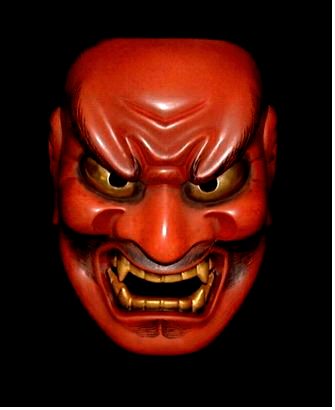
Shikami
Uba, who represents a once beautiful woman.

Uba
Okina is most interesting. He is the oldest representation in the Noh repertoire. He symbolizes agricultural fertility, and is the only mask that actors don after entering the stage.

Okina
Overall, the Japan exhibit was the only one that piqued my interest. Noh is fascinating and is definitely worth further researching.
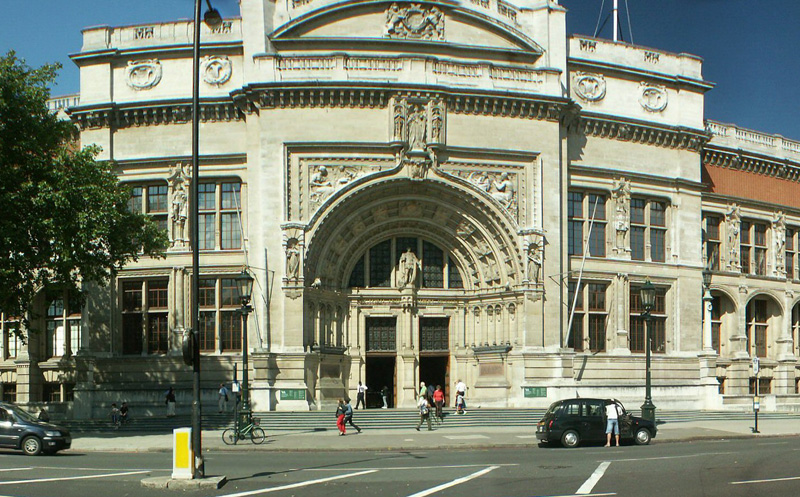
http://farm1.static.flickr.com/91/271297653_670230dee1_o.jpg
Stay tuned for part 2, featuring the British Museum, National Gallery, and more!
Tags: Andrew B
Since I am beginning to feel the crush of pressure to visit all the required museums while in London, I spent an afternoon in the Cabinet War Rooms/Winston Churchill Museum. In truth, I was not particularly moved by either. I think I lack a lot of the personal feeling involved in seeing such an important aspect of British history simply because I am not British. Churchill as a national icon means much less to me, an American, than it might for my English counterpart. Still, I most enjoyed listening to portions of Churchill’s speeches and writing down bits that inspired me. I also was interested in learning how he constructed his speeches, and found it endearing that he used notes only after he “dried up” at an important event. In the Cabinet War Rooms, I was struck most by learning that the lights in one of the most important rooms were literally never shut off for six years because of the war. I also felt badly for the people who worked such long, tedious hours in the bunker without much sunlight or rest. However, it’s also somewhat moving that these women and men cared so much for their country that they were willing to put forth so much time and effort, and I wonder if I would do the same for my own country.
After the museums, I stumbled upon St. James Park and decided to wander through. In doing so, I ended up in front of Buckingham Palace leaning on a wall, and it was there that I first truly FELT that I am in London. I was standing in the midst of a series of tour groups, many of which were not speaking English. I looked down upon the water moving, people walking alongside, a field with people sitting and relaxing, and a little coffee shop, all of which were surrounded by trees. Out of the trees rose the London Eye and the very top of Big Ben. It was the most picturesque view I’ve encountered thus far, and I don’t think that I’ll be forgetting it anytime soon. To me, it really captured the essence of London as I currently see it: a vital place with small tranquil spaces mixed throughout, the importance of tourism, national pride surrounding the royal family, history mixed with the present, and an ability to feel at home even for those not native to London. I wasn’t able to take a photograph because my camera is broken, but I would definitely be interested in seeing the places that have most inspired everybody else in their travels in the past two weeks.
Tags: Amy
Hey there, Patsy and Amanda Girl here, your one and only source into the the scandalous lives of Londons elite,
(aka Dickinson college Norwich Humanities students)
In the last few days we have made quite the dent in our list of required activities. Instead of blogging after each trip, we decided to collaborate our ideas and opinions within in one “museum” post.
At this particular time we have gone to both the British Museum and the Cabinet War Rooms/ Churchill Museum. What we would like to do, is continue to add information about required museums to this post during the remainder of our time in London.
Although Amanda cheated and already wrote about the British Museum, we will further our analysis of this great house of stolen goods in this post. After a morning of strolling over eroding bodies, we found a glorious pizza joint and indulged ourselves with BBQ chicken pizza and a meaty calzone. Realizing we ate our body weight in food, we decided to return the Bloomsburry area to change for the gym. Needless to say our intentions were not strictly academic so, to get back on track, we agreed to visit the British Museum before our workout.
Our first impressions of the museum held true to Professor Qualls’s notion that to see everything would take a full day. After searching for a map, we began our search through the main level. In order to refrain from repeating what everyone has already written about this museum we have decided to note only our specific interests. We found that our two favorite exhibits were the table displaying rows and rows of pills, and the Greek Parthenon. Our initial thought was that the British were very lucky to have such precious and historical artifacts for any average person to view. However, after walking through each room, we realized that a such an extensive collection, from all over the world did in fact represent how powerful the British empire was. Are we ones to judge how these artifacts came into the possession of Britian ? We don’t think so, but it is fascinating to attempt to understand England’s direct relationship with countless foreign countries.
This is a perfect transition to our visit to the Cabinet War Rooms and the Churchill Museum. Before we entered the museum, we happened to stumble upon the traditional changing of the guards ceremony. Lets just say we became mildly afraid of fancy uniforms, big horses, and yelling. After our wild encounter with the guards, and a few stops to admire our surroundings, we walked over to the museum. We paid our admission fee and began our journey through this underground world. We were very impressed by the museums state, and became intrigued by the history of the Blitz, (luckily the next day we were informed by our class in Regent Park). We came to an exit, feeling mildly unimpressed with how short it was, and then realized we hadn’t seen the Churchill Museum. We then ventured upstream back to the museum.
The Churchill Museum is exactly that, a memorial museum to Winston Churchill that, depending on you attention span, can captivate you for quite a while. We both agreed that the overall construction of the museum was one of its most appealing characteristics. Its shape, lighting, and interactive activities provide entertainment for a wide age range. We were most amused by the time line in the center of the room that, when touched, displayed data from days of Churchill’s life.
Although these two museums, for the most part, have absolutely nothing in common, they both demonstrate critical and influential aspects of British history. Each museum we visit solidifies the idea that Britain is always evolving. Not only its people, but its ideas as beliefs as well.
By the way, the Gym down the street, Oasis, is not a gym! We were dressed and ready but it was nothing. Disappointed?
Some things never change, London better love us.
xoxo
Patsy and Amanda Girl

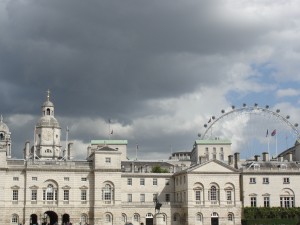

Tags: Amanda · Patsy
As I continue to explore London more and more I realize just how vast and widespread this place is. Before our class took a walk through Southwark on Friday morning I realized I had not even been close to where we were that day. There is so much to do here and it would take years and years to truly get a sense of what all London has to offer. Over the past few days i’ve been trying to conquer as much as London as possible. During Friday and Saturday I spent most of my time conquering museums and theaters.
I’ll start with museums. On Friday after our walk of Southwark I headed out to lunch with a fairly large group of people. After our lunch I had a hard time shaking off a bout of sudden tiredness. I figured a trip to the Tate Modern would remedy this. I’m not afraid to admit that I was wrong.
Modern art is an interesting beast. As much as I’ve tried still I have a hard time understanding it. Despite this statement in no way am I critical or judgemental of anyones work. As someone who has basically no experience/background with modern art I have no right to say anything negative about someone’s art, I simply just can’t grasp it. Walking around through the first few galleries of the Tate Modern I wandered, I sat, I stared, but still found nothing. I asked Brandon his opinion about some of the artwork and this helped. Talking to someone who has taken classes in the subject and is passionate about it was definitely a good choice and I learned a lot but after some more musings I still found nothing. Perhaps it was the drowsiness, perhaps it was the absurdly sexually explicit video I witnessed in one section of the museum but soon after entering I realized I had seen enough of the Tate Modern.
Since many other people in our class had seen the Cabinet War Rooms and the Churchill Museum earlier in the week I figured the afternoon would be a great time to see both of those. This time I was right. From the moment I entered the doors I had a feeling I would enjoy walking through this dungeon of secrets. Although I would never want to be stuck down there for long periods of time I was amazed at how well intact the war rooms were. As I walked through the narrow hallways I had an eerie feeling that I was sent back in time to the early 1940’s when Churchill used the space frequently during the Blitz to hold meetings and conduct secret business. My favorite part of the war rooms was the tiny room that Churchill put 11 secretaries in. According to the audio tour despite the close proximity to each other he expected immaculate work from every single one of these women and did not hesitate to fire them if they were not pulling their weight.
After the tour of the War Rooms I spent a bit of time in the Churchill museum before my fatigue caught back up to me. I decided it would behoove me to head back to my room and rest for a little bit before preparing for the performance of “Troilus and Cressida” that we would be attending that night at the Globe Theatre.
After getting off at the St. Paul’s tube stop and scurrying across the Millennium Bridge Brandon, Aidan and I made it to the performance about ten minutes early. Just enough time to catch our breath and prepare for the real ordeal: standing for three hours. Despite my concerns going into the performance in retrospect being a “groundling” was not that bad at all. My feet were certainly a little uncomfortable by the end of the night but being so close to the action on the stage certainly made up for that. I really enjoyed the performance overall. Matthew Kelly’s portrayal of Pandarus was phenomenal and Paul Hunter (Thersites) left me in stitches for most of the night. While reading the play beforehand I did not enjoy it all that much. It’s amazing how easily and completely transformed a play can become however once performed versus just read. My experience at the globe was great and I hope to go back and see another show before I leave London.
Walking back over the Millennium Bridge that night to the beautiful view of St. Paul’s across the Thames I concluded a few things. The first being that London is even more stunning at night than it is during the day. The second being that i’m not going to enjoy everything I see here in this city and I have to come to terms with that. I have been lucky so far on this trip that very few things have disappointed me. I realize I have to be ready to be surprised both negatively and positively with encounters I have, places I go and things I learn. Like everything else in life London is not perfect nor should it be.
Tags: Henry · Museums · Theatre
This was initially a comment on Audrey’s wall, but I realized I hadn’t written my own blog post yet, and (more importantly) I was getting a bit preachy. So here it is:
I would first like to say that a city devoted to capitalistic endeavors is a beautiful thing. I look around and everywhere I see touristy traps– places trying to make you pay for restaurant seats and churches. Bath was no different, save for its own self recognition. It didn’t try to be anything it wasn’t. You want to drink our fancy water, you bet your ass you’re paying money. So hats off to you Bath and your unashamed stance, don’t ever apologize!
I, like Audrey and fellow travelers, tried to find the quintessential “Bath.” Far beyond the wrenching grasp of the tourist industry. I wasn’t looking for anything beautiful though, on the contrary. I attempted to walk to streets further into the realm of residential. I found parks with no names, pubs with local patrons drinking at 2 in the afternoon, and shady alleyways with no pretty walls or paintings of any kinds. It was no landscape shot, but there was a beauty in the simplicity. Sadly, I had no idea how to get home and wondered aimlessly for quite a while until like a beacon of hope I ran into Professor Qualls, who told me I was only a turn away from the church (I swear I had been wondering for a long time).
My love of Celtic heritage made going to Stonehenge cool. I mean the curiosity of the whole thing was pretty cool, especially seeing how the English lady on the head set phrased their speculation on its purpose. Honestly, I thought they weren’t very culturally relative: they kept applying a few modern ideas to the potential purpose. The thought that Stonehenge would be a symbol of power with other purpose seems a bit silly. Further, they kept bringing up concepts of hierarchy, which is complete speculation. Anyway
Next big thing was Borough Market, which was incredible. I have found my new love, sorry Planet Organic. How busy and hectic it was. The mushroom dip was especially delicious. Anything from Kangaroo burgers to a bottle of red wine can be found there.
I can’t exactly remember chronological order, but we saw Troilus and Cressida at the Globe Theatre, and I was quite happy with it. I felt they leaned a little too hard on the comedy side, but I was in a strange mood when I read the play initially. All the actors were fantastic and the visual aspects of the people were quite engaging. It is always interesting to read works based around the Trojan War. I remember when I was but a wee-lad, and my grandmother read the Illiad to me, thinking how amazing Achilles was and not really caring about Hector too much, but as I matured and read the work again by myself I began to sympathize more and more with him and less so with Achilles, which I think is the idea. Both warriors are bound by a sense of honor and fate. After watching this preformance, I felt that Hector was almost more enslaved to his sense of duty than Achilles was to his pride.
The British Museum was pretty cool, and I think I finally get what everyone else has been feeling. When I was at the National Art Gallery, Paul stopped me to point out Sunflowers, by Van Gough, and I wasn’t really sure what to say. Cool? But when I was at the British Museum, I came across something called the Dancing Shiva (http://dustysojourner.files.wordpress.com/2009/06/shiva_nataraja_musee_guimet_25971.jpg). Last semester I had been one tequilla shot away from having the thing on my back (which doesn’t always mean it has any value to one at all but in this case it did). I’m not sure why, but it’s a symbol I have always connected with. The Nataraja is meant to represent the destruction of the universe through Shiva’s crazy dance moves, but it is also meant to show the oneness of the universe. So there I was, standing in front of this bronze statue feeling as giddy as a little school girl, awesome.
The Cabinet War Rooms and the Churchill Museum. What to say? The Brits love their Churchill. One of the first lines in the head set was something along the lines of Hitler and Churchill both had a cabinet, but Churchill never overroad his. Why bring Hitler into this? The other thing that made me chuckle was when they were retelling the story about the hole punch. Churchill basically chews out this secretary because he uses weird words and she couldn’t figure out what he meant, and then the head set said: but he had a lot of pressure, so it’s ok. Not ok Churchill, not okay. Overall, the museum was a giant pat on the back for the Brits and their ability to live in small rooms for a long time. Seeing where they lived was neat, but it wasn’t incredibly informative and despite having creepy wax figures and listening to recordings, I never felt enveloped in the way, I think, they wanted to make the guests feel.
As a note, make sure you ask the ticket guy for a receipt because they don’t give you one otherwise, and there is no way to be refunded without it– your ticket isn’t enough, and the museum isn’t worth the ten quid.
Anyway, cheers
Tags: Andrew R
In the past three days I have visited 3 museums, the Globe, and a carnival so needless to say I have a lot to blog about.
On Friday 28 Aug. I went to the Tate modern. Before arriving I was very excited to start through the modern art gallery, however it drastically started to go down hill from there. In the first few rooms I was happy to see works by Miro, Matisse, and Picasso. As the rooms went on the artists became more obscure and the works became more and more disturbing. If any of you out there are considering taking your young children to the Tate Modern, think again unless you want them to have nightmares for weeks afterward. The unsettling works began with photographs of men with bandaged bleeding genitals and escalated to projected images I would prefer not to describe in this blog post. Needless to say I did not make it through the entire museum before I had had enough. I do not like nor do I respect shock art of this style. I feel that it is pointless and is only shock for shock’s sake; it does not hold a message nor purpose. I think that shock art is produced by otherwise obscure artists as a method of getting attention, publicity, and money. For this reason, I decided not to support such art and artists and I left the Tate Modern
After witnessing the projected images I went to the Cabinet War Rooms.The Cabinet War Rooms were a much better experience than at the Tate Modern. With my student ID I was able to get a ticket for 10.40, which included the entrance fee into both the Cabinet War Rooms and the Churchill Museum and awarded us the opportunity to us a hand held audio listening device. At the Cabinet War Rooms Museum we were able to walk through the cabinet war rooms and see them through Plexiglas as they were during World War II while listening to historical commentary through our hand held audio devices. Walking under slabs of concrete through very small corridors and rooms really helped me imagine how it would have been like for Churchill and the others to live during the air raids. I personally cannot fathom having to stay underground for months at a time without being to leave such a small dwelling and get outside. However, the museum gave me a taste of what it would have been like.
Yesterday, 29 Aug. I went to the Victoria and Albert Museum. Everyone else wanted to go to the British Museum around the corner, but I wanted to go to a required museum that was further away while I still had time. So as everyone else headed to the British Museum I went to the Victoria and Albert by myself. At first I was a little nervous about heading out in the city on my own but as soon as I made it to the museum I immediately began to see the benefits of going by myself. I could walk at my own speed and visit all the exhibits I wanted to see. So, I decided to purposefully get lost in the museum (which was easy to do considering the museums vastness). I wandered from the sculpture room through a room filled with Islamic art, to a the Japanese exhibit, a fashion exhibit, a Raphael exhibit, a British exhibit, a iron wok and wares exhibit, and a jewelry exhibit before getting to tired to continue any further. Of all the things I have done in London so far going to the Victoria and Albert museum has been the most enjoyable experience so far. I loved the LARGE variety of exhibits the museum had and would greatly like to return. The museum has something for everyone and is a a must see stop for any trip to London; I am glad Prof. Qualls required us to go!!
Though I liked the Victoria and Albert Museum I found it rather confusing. It did not seem to have any distinct layout or purpose; it was simply a bunch of different things shoved together into one overarching museum. Most other museums I have been to have a distinct type of art and artifacts on display. The Docklands Museum was all about the history of the London docks, the National Gallery consisted of only classical art, and the Tate Modern stuck to only modern art. However, the V&A did not just have art nor did it just have artifacts and it did not stick to a particular time period or place. The museum’s art and artifacts were all over the place only separated by rooms, almost as though each room was its own distinct museum. In search for the museum’s overall goal I looked at the website and found that their mission statement was:
“The purpose of the Victoria and Albert Museum is to enable everyone to enjoy its collections and explore the cultures that created them; and to inspire those who shape contemporary design.
All our efforts are focused upon a central purpose – the increased use of our displays, collections and expertise as resources for learning, creativity and enjoyment by audiences within and beyond the United Kingdom.”- http://www.vam.ac.uk/about_va/
To me this goal, like the museum’s collection, seems a little too broad for a single museum. Most of the exhibits are organized by the objects they contain rather than the cultures they represent, and therefore the museum’s goal cannot simply be for the visitors to learn about the art of various cultures. It also cannot only be for the enjoyment of those who visit the museum. I can understand the museum’s goal to use the collections for educating the public, but still the question arises: “what are they teaching and why are they teaching it?”

The Victoria and Albert

Princess Diana's Dress at the Victoria and Albert
Tags: Rebecca
August 30th, 2009 · 1 Comment
I’ve noticed that my blogs tend to have an incredibly critical tone to them. As a person who usually is quite positive and tries to find the good in all situations, such a pattern is a bit upsetting or at least surprising to me. Thank goodness for the Cabinet War Rooms offering me the chance to mix up the tone a bit. What seems to be most upsetting to me about certain places I have visited while in England is if that place operates behind a façade of what it really is. St. James’ Park is beautiful and promises peaceful relaxation but is only enjoyed by a select few. Bath is beautiful because that’s what tourists want to see. The Cabinet War Rooms are a bit on the pricier side of the spectrum so admittance could be seen as selective in ways. But assuming you have the twelve pounds and some change to get in, you’re guaranteed to see and experience all that the rooms were during World War II. That sense of ‘real-ness’ is something I most appreciated about the museum. The Blitz completely changed the London atmosphere during WWII, and somehow the museum was able to capture the feelings of anxiety that one can only imagine were present in the city at that time.
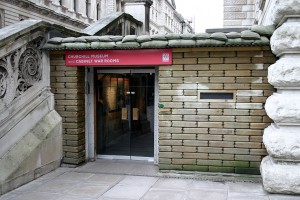
Outside view of The Cabinet War Rooms
Upon entering the museum, a feeling of eerie tension is almost inescapable. A most unpleasant guard very solemnly asked to look through my bag before I was to be admitted into the museum. I cracked an admittedly bad joke about how many maps I was carrying in it and how that might be difficult to look around in the bag. Laughter, a smile, even a twinkle of the eye was completely absent in his reaction. I recognize that he must get similar jokes all the time but his stern mood definitely set the mood for what was to come in the rest of the museum. Now, this may seem an odd experience to enter into the blog especially when I’m hoping to highlight how wonderful the museum was. Truly, I would have appreciated if he had acknowledged my attempt at being friendly but I think it’s actually good that he didn’t. The museum wasn’t a happy one. It shouldn’t have been. It was a preservation of a shelter that was put in place to ensure that communication and governance could continue in the case that an air raid might occur. As the Blitz is still a very real and felt occurrence in London’s history, the museum that seeks to capture that time should do that as fully as possible. So, having learned my lesson about keeping my jokes to myself, I proceeded through the rest of the museum. The lighting was dim, the people going through the museum quiet, the rooms closed off, and the lay out confusing. Again, this may sound like a negative review of the place but it’s exactly the opposite. More than any of the readings of personal accounts or facts about the destruction of the bombings, it was the tense atmosphere found in the museum that made the Blitz seem the most real to me. I was guided by a very thorough audio tour and yet still never knew where to go. Yes, this was frustrating but imagine how living and working in that space must have been. Churchill and his staff were living and working in that dreary underground space trying to carry on as positively and normally as possible. They were in the midst of a war with a threat of an air raid always present and surrounded by the people who are relying on them to not mess up. And if that isn’t enough pressure, they were underground- the situation could, arguably, not have been more confusing and frustrating. Those feelings are still alive in the museum. Yes, it’s a tad disconcerting to feel that strange in a museum but if you push past the feeling of ‘wow, I feel a bit uncomfortable’, you realize how fitting that feeling is for the location.
I realize that I took an odd way to describing a positive side of a museum by essentially saying “it was creepy but cool!” But that’s not so much the message. The message to me is that the museum successfully steered clear of any type of gimmicky portrayal of the war rooms and offered its visitors a chance to really sense what being in the war rooms might actually have been like. Now if only we can get rid of the cheesy gift shop and lower the price…I’ll save that for another post though.
Tags: Audrey · Museums
















